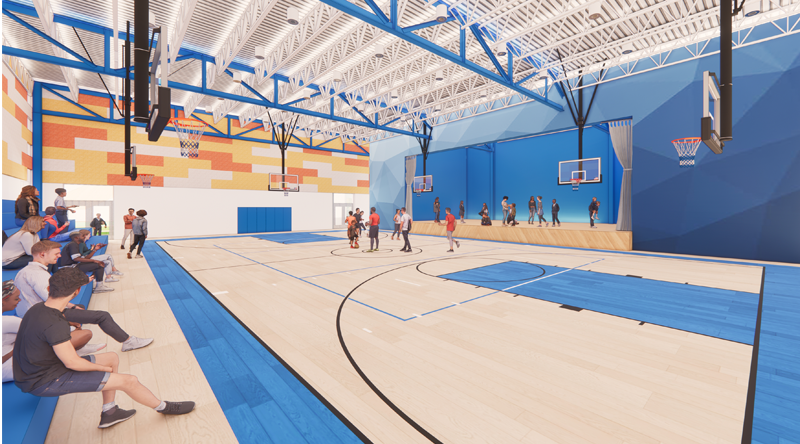Child-Centric Design that Fosters Growth, Comfort, and Connection
By Taylor Starr
As the saying goes, children are our future. It is essential that we recognize the impact of early experiences on their growth, intelligence, and emotional well-being. Their minds are like sponges, absorbing and remembering even the smallest details of their environments. The experiences they have during their formative years shape the individuals they become as they grow older. As a society, we are realizing the importance of paying attention to these experiences. Parenting groups, caregivers, and educators are becoming more aware of the impact they have on children’s development.
Interior design can play a crucial role in creating environments that support child growth, development, and overall well-being. By embracing children’s differences and being thoughtful about the ways they interact with and learn from their surroundings, designers can curate nurturing spaces that cater to their specific needs and interests.
Flexibility and Adaptability
Child-centric design provides spaces that are flexible and adaptable. By incorporating movable furniture, such as rolling chairs or adjustable desks, educators are encouraged to modify their teaching spaces to accommodate different learning activities. Providing wiggle chairs and other alternative seating options allows children to move and be active with their environments. Offering easels and whiteboards allows children to freely express their creativity.
Recognizing that children have different learning styles and interests, it is important to create diverse learning environments. Spaces should be designed with different zones, pods, or tables that cater to various activities, including hands-on activities, technology-based learning, and quiet/focus opportunities. This variety allows children to engage with subjects and topics they are passionate about in a way that works best for them.
Cultivating Community
In order to create classrooms and learning environments that foster interaction, socialization, and a sense of community among children, child-centric design should promote collaboration and teamwork. Collaborative workstations or project spaces enable children to work together on assignments or engage in group activities. By contrast, they should also have the option of comfortable seating nooks or more private spaces, allowing them to have moments of respite or solitude when needed.
Comfort and Color
For children who occasionally or frequently experience stress and anxiety, integrating comfort into design is paramount. Striking a balance between energizing and comforting elements is essential. By incorporating visually energetic colors, such as sunny yellows and oranges, interior designers can create an uplifting atmosphere. Mixing these bold colors with large graphics injects vibrancy into the space, captures attention, and fosters active participation. However, it is important to balance these design elements with calming colors like blues and greens to promote a sense of tranquility. Texture also plays a significant role in creating comfort, and should be considered when conceptualizing the foundation of an interior space. Additionally, kid-sized spaces and furniture that are scaled down to their smaller frames help children feel comfortable by providing a sense of ownership and safety.
Creativity and Individuality
Child-centric design should celebrate creativity and individuality. By allowing children to personalize their spaces, such as displaying their artwork or crafts, designers can create a sense of ownership and pride. Providing dedicated areas for different activities, such as reading corners, art stations, or imaginative play zones, allows children to explore their interests and discover their passions. Incorporating storage solutions that are easily accessible also encourages children to keep their space organized, promoting a sense of responsibility and independence.
Outdoor Exploration
Child-centric design encourages recreation and physical activity. Classrooms and outdoor spaces, like playgrounds, should be designed to promote play, providing ample space for movement and exploration. Even in indoor environments, it is essential to ensure access to natural light and incorporate interactive elements that allow children to use their entire bodies and actively engage with their surroundings.
When designing spaces that keep children vibrant, active, and connected to their surroundings, designers should bring the outdoors in by maximizing access to daylight and implementing a natural color palette with a variety of textures, including wood grains, woven fabrics, and other visually textured elements instantly adds warmth and visual interest.
The Big Picture
Child-centric interior design acknowledges the importance of childhood experiences in shaping the growth, development, and emotional well-being of children. By embracing their differences, providing flexible and adaptable spaces, promoting interaction with their surroundings, and integrating comfort, designers can create environments where children can thrive, learn, and connect with the world around them. Child-centric design in schools is essential for nurturing children’s curiosity, imagination, and sense of belonging. By prioritizing their needs, interests, and well-being, we can create spaces that inspire and support them on their journey to becoming confident, well-rounded individuals who contribute positively to society.
As a Partner and Interior Designer at Bockus Payne, Taylor Starr’s responsibilities include working on projects at every phase of design, from programming to construction administration.

